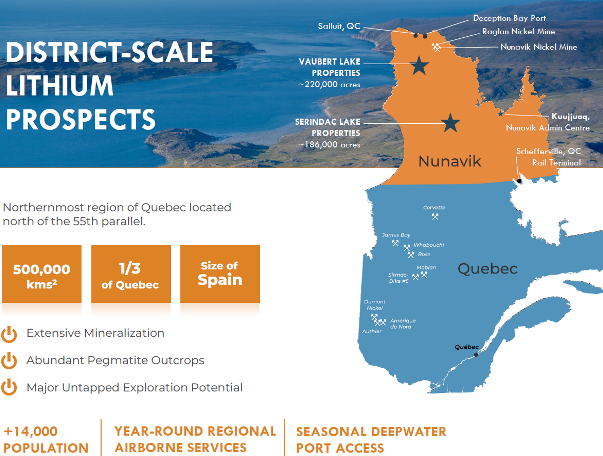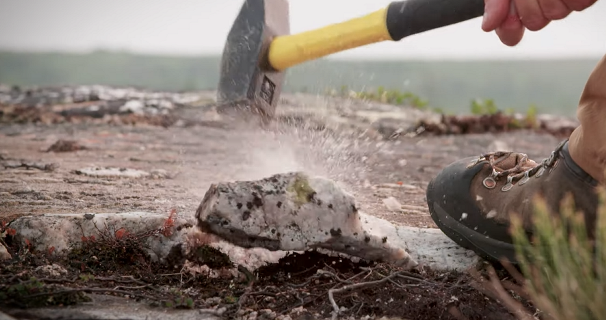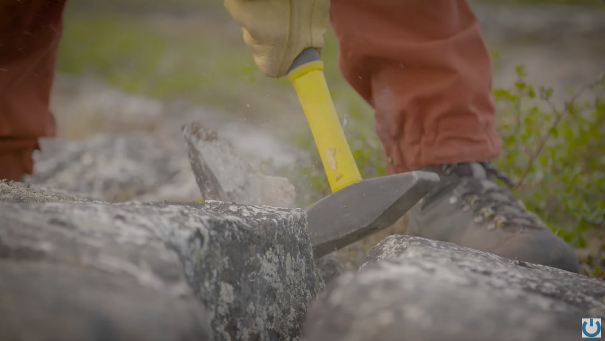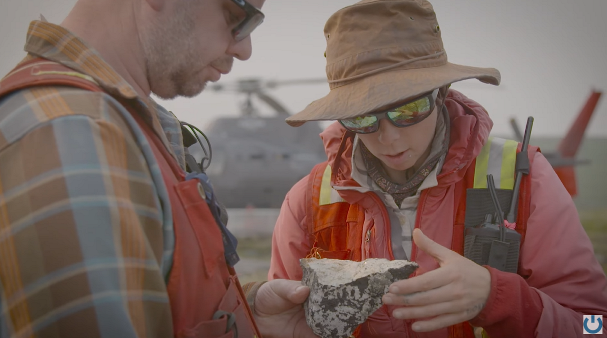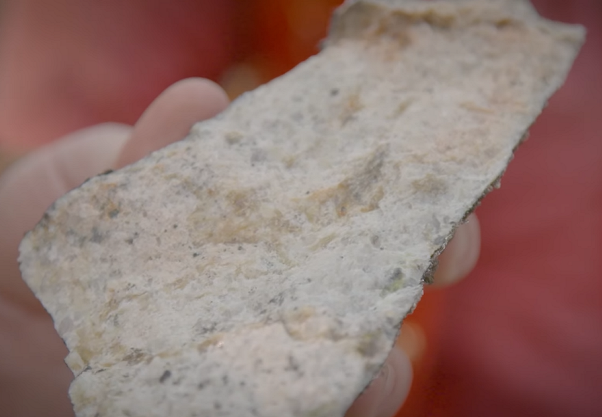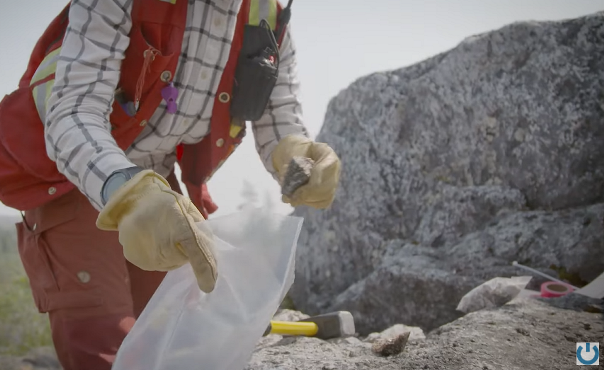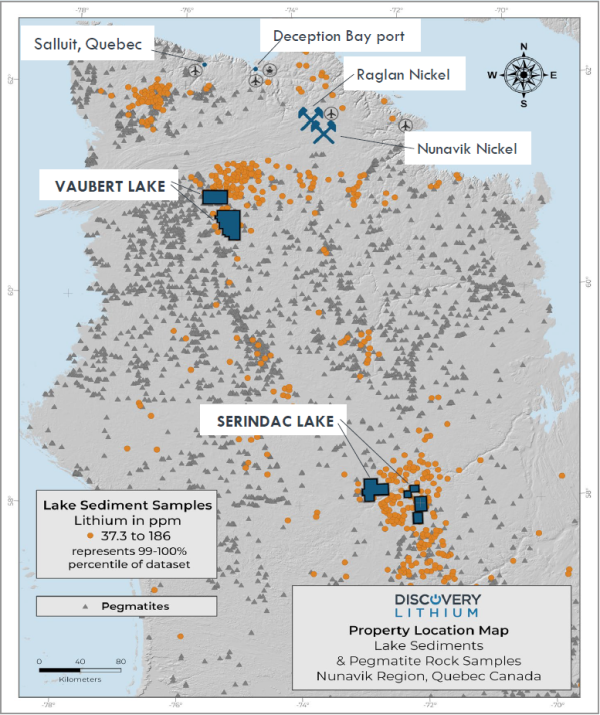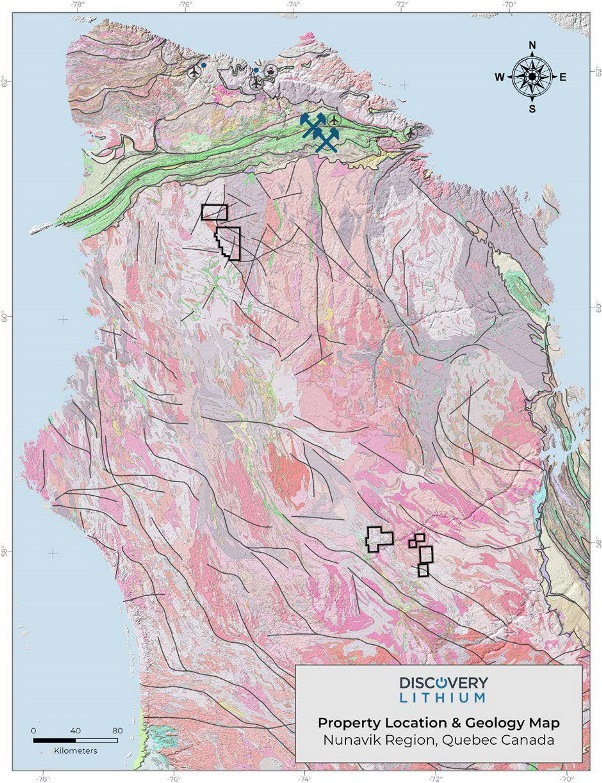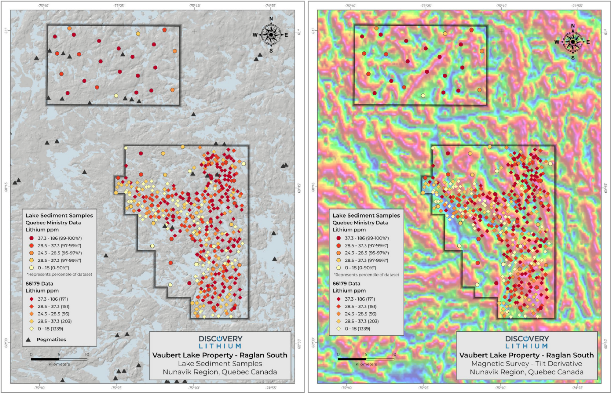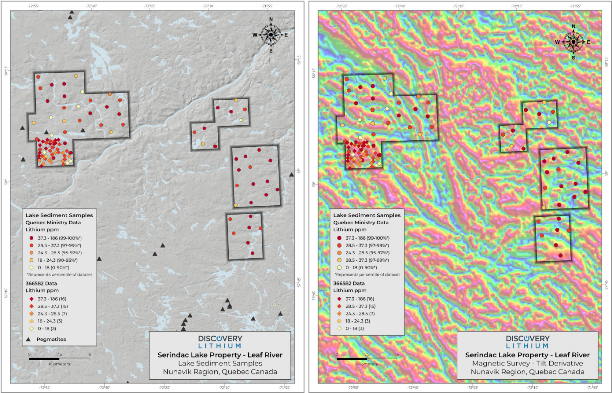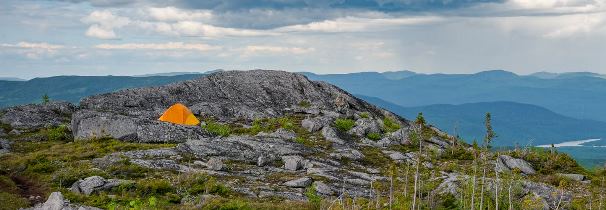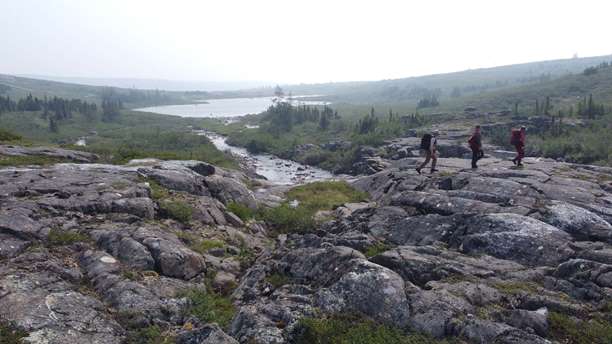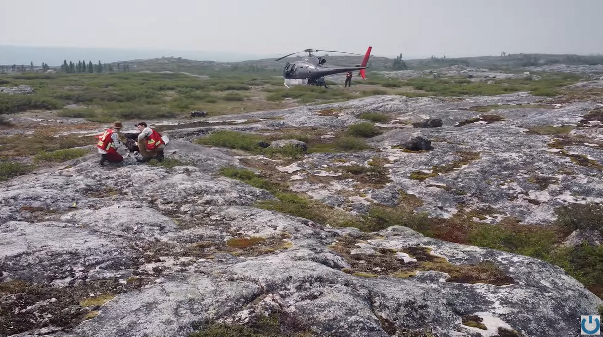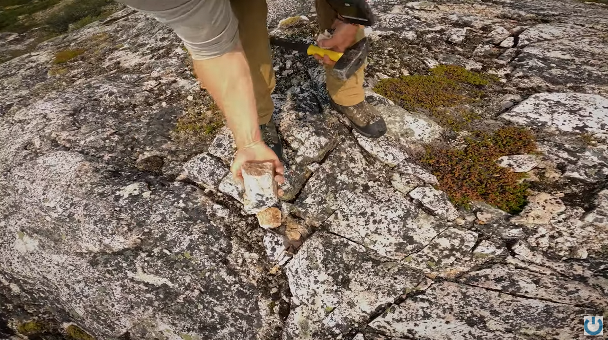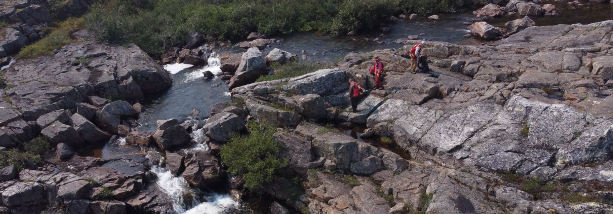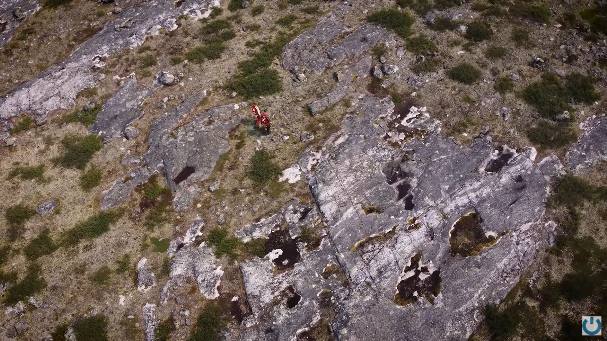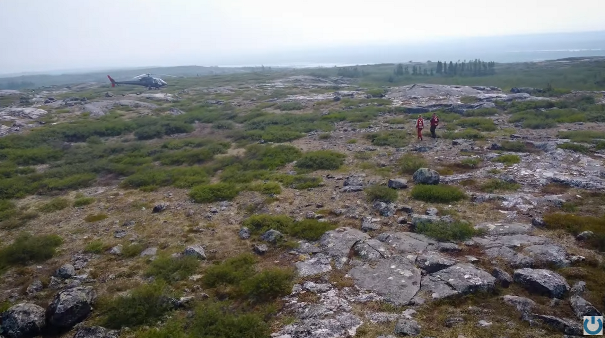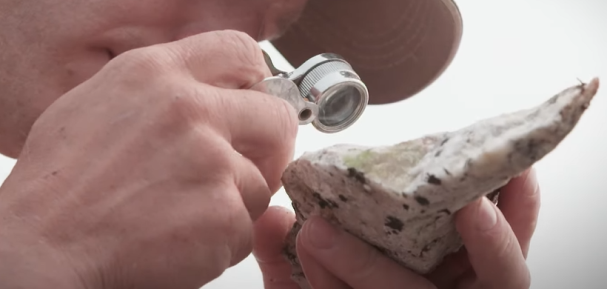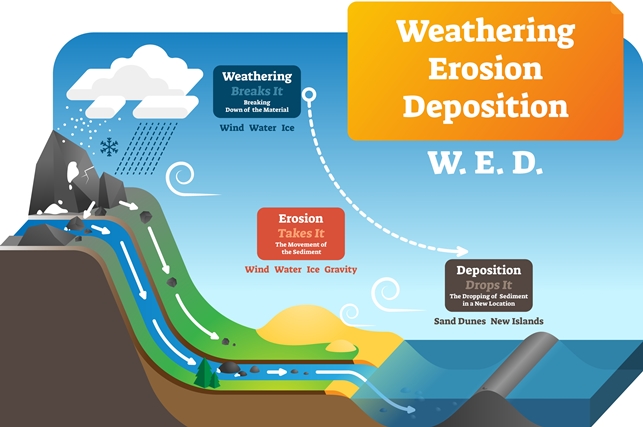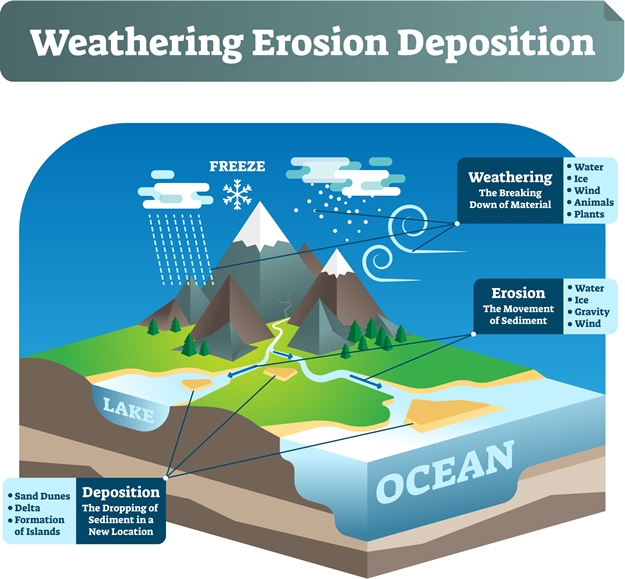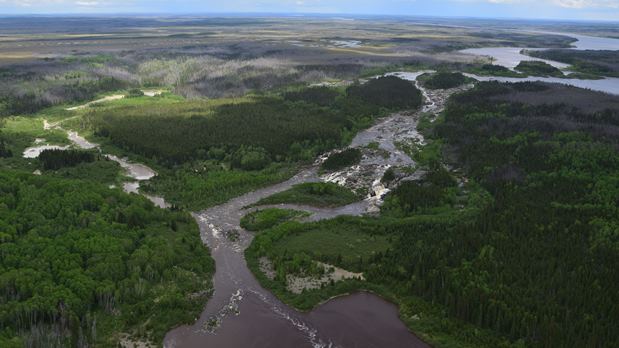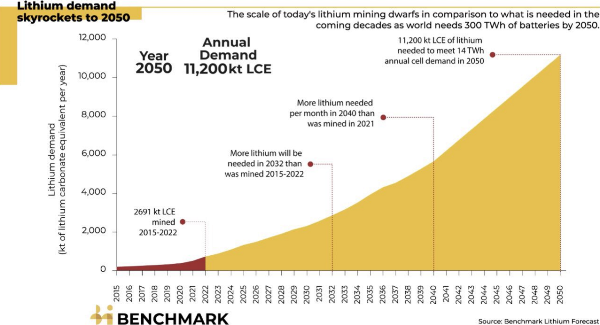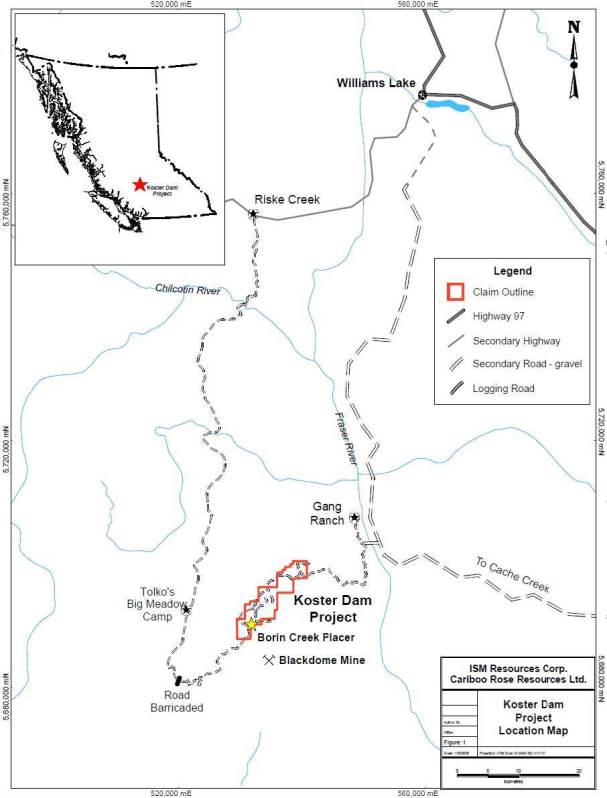Full size / Shawn Ryan, Discovery Lithium‘s lead prospector, on the cover of the New York Times Magazine. (Photo: Finlay MacKay for the New York Times). The Nunavik lithium opportunity was generated by renowned prospector Shawn Ryan. He has been the recipient of numerous industry awards and has been identified in the media as one of the world‘s most successful prospectors. A global leader in his field, Ryan‘s prospecting and specialization on advanced soil work led to the discovery of the millions of gold ounces at the world-class Golden Saddle & Arc, Coffee, and QV gold resources in the Yukon. Based on his in-depth analysis of provincial geochemical data, especially in comparison to known data found in the ongoing discovery initiatives of the more southerly James Bay region, it is believed that the much larger Nunavik region holds excellent potential as a breakout lithium district. (Source)
Disseminated on behalf of Discovery Lithium Inc. and Zimtu Capital Corp.
Recently, Discovery Lithium Inc. has made a landmark acquisition in northern Québec. The district-scale properties cover 1,643 km2 of pristine ground with the highest percentile lithium samples in lake bottom sediments as identified in Québec‘s government database. The data indicate higher lithium concentrations and better distribution well beyond the James Bay Lithium District further south in Québec, where Patriot Battery Metals Inc. made North America‘s largest lithium pegmatite discovery at its Corvette Property. The company, now valued at $1.1 billion and trading near $10 per share, acquired Corvette in late 2017, when it was named 92 Resources Corp. The discovery was made in 2018 (see here and here), however during a time when market sentiment for lithium was not as good as these days, for which reason it was not until last year that Patriot Battery Metals‘ share price started to skyrocket.
Based on Patriot Battery Metals‘ recent success, an unprecedented number of junior exploration companies is rushing into the James Bay Lithium District, including Discovery Lithium with its most recent acquisition of the large Route Du North Project (~60 km2) close to infrastructure and advanced lithium projects. With Discovery Lithium having also acquired large property packages in northern and eastern Québec, the company is primarily looking for the next lithium district in under-explored regions.
The search began with a study of Québec‘s government database showing historic lithium concentrations in lake bottom sediments accross the province. The idea is that over long periods of weathering and erosion, particles of lithium-bearing spodumene pegmatites break down and move into rivers and finally accumulate at the bottom of lakes. The more lithium in these lake sediments, the higher the chances that lithium-rich pegmatites are somewhere near-by. Discovery Lithium has acquired large land packages around lakes with the highest lithium accumulations to then find the source.
Click above player or here to watch video on Discovery Lithium‘s vision and mission.
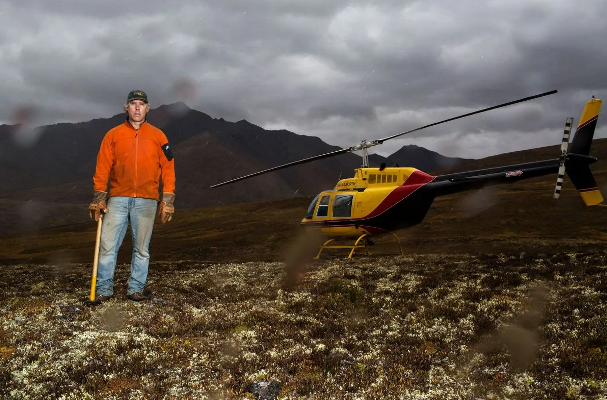
Full size / “Shawn Ryan has always seen the world from a different point of view. Long before Ryan drilled his first sample, he revolutionized the mushroom foraging world. Morels are some of the most coveted mushrooms in the culinary realm – second perhaps only to truffles. And like truffles, morels have always been hard to cultivate, and hard to find. But not for Ryan. He studied publicly-available data about all sorts of stats. Things like recent rainfall, forest fire frequencies and heat intensities, frost patterns – along with dozens and dozens of other data points that no one had ever thought to put together before. Soon, Ryan had made a science of finding morels. His research proved successful, guiding him to the exact spot where they would grow, at the exact right time… Where he would harvest a year’s worth of mushrooms in a few hours. Mushroom foraging has never been the same – he revolutionized the field. That’s when he turned his eye to prospecting, a field he has revolutionized as well, if not better... Ryan knew that he could find patterns where others couldn’t. And that’s just what he did in the Yukon. The Yukon was long thought to be an exhausted area… But Ryan saw something else in the data. He bought land in the area, and started surveying the largely uncharted geology. He looked for signs and patterns, that would lead him to precious metal caches. It’s a common enough story. What’s not common is how successful Ryan was. When he started finding gold, he’d take his earnings and buy more land. He did that over and over again, eventually earning him the nickname “Double Down”. Once he’d found enough gold to bring majors into the area and kick off a new gold rush, Popular Mechanics called him: “The World’s Greatest Gold Prospector” But Ryan has been to the top of the gold mountain. Back in 2018, speaking with Popular Mechanics, he could gesture to the million-acre gold field he’d found and declare it likely held 5 million ounces – worth $6.8 billion at the time. Today, Ryan is looking for his next challenge. And today, there is no greater challenge than finding enough lithium to keep up with the global appetite.“ (Source: “Junior Explorer’s Unique Discovery Reveals A New Lithium Hotspot“, 2023)
Excerpts from “Junior Explorer’s Unique Discovery Reveals A New Lithium Hotspot“ (2023): “On an icy terrain in northern Quebec, the world’s most famous gold prospector, Shawn Ryan, whispered “Wow.” He had just found it – the telltale signs of a large mineral deposit. He feels just as giddy every time – every major find feels fresh. Only this time, he wasn’t looking for gold. Ryan was looking for a metal likely to be even more lucrative over the coming years: lithium. Using a combination of old-fashioned prospecting with cutting-edge tech – some of the gear invented by himself – Ryan believes he’s found one of the most promising potential lithium formations in the world. He believes this field could someday rival anything found in South America or Australia... One of Shawn Ryan’s key insights was looking for gold where others hadn’t. While others looked for rich veins, he was looking for gold sediment. That basically means gold remnants mixed in with debris, dirt, and rock. Ryan became extremely good at locating these kinds of overlooked deposits. In fact, most of his early finds were from gold found in sediment. Now you may be wondering why that’s important? And what that has to do with Ryan’s new lithium venture? The story is actually quite surprising… You see, pegmatites are one of the best places to find lithium deposits. It is a precursor that shows you the right area to look for lithium-bearing pegmatite bodies. And not only is Ryan an expert at finding mineral deposits from his days as a gold prospector… But Ryan was also able to bring his unorthodox approach to exploring those deposits and find clues that others had missed. In fact, since Ryan’s insight, majors in the region are now exploring lake sediments for deposits, similar to what Ryan believes he’s found. But before he kicked off this new lithium rush and the majors arrived, Ryan picked the juiciest slices for himself… In northern Quebec… Where there have been many lithium-bearing pegmatites through the eons… Many of them filled with lithium from volcanic activity or other major geologic events long ago. Heading into his search, Ryan knew that four of the largest lithium finds in the Americas were all in this area of northern Quebec. And, the icing on the cake? This part of the world has historically been extremely rich in metals whenever anyone has gone looking… but hardly anyone has looked.“
Recently, Discovery Lithium announced the acquisition of 2 large land packages located in the under-explored Nunavik region of northern Québec.
Nunavik means “great land“ in the local dialect of Inuktitut and the region is under treaty with the Governments of Québec and Canada and the Aboriginal people: The James Bay and Northern Quebec Agreement (JBNQA) and the Northeastern Quebec Agreement (NEQA) – the first comprehensive land claim agreements signed in modern times with clear mechanisms in place for indigenous dialogue, consultation, and resource management. Quebec government’s Société du Plan Nord is mandated to promote investment in the development of energy and mineral resources as well as transportation infrastructure in northern Québec.
With decades of proven mineral production, Nunavik is mining-friendly and capable of sustaining successful and profitable large-scale production. Importantly, the region has access to the deep-water port at Deception Bay, which serves the Raglan Nickel Mine from Glencore. With 3 underground mines at Raglan, Glencore is Québec‘s largest producer of nickel (nearly 1.5 million t of ore processed on site annually, resulting in a production of nearly 40,000 t of nickel-in-concentrate in 2020). The concentrate is transported 100 km by truck from the mine site to the Deception Bay seaport, where it is stored until it begins its 2,600 km sea voyage to the Port of Québec, where it is transferred to a train bound for the Glencore Smelter in Sudbury, Ontario. The Raglan Mine launched into operation in 1997 and is among the richest base metal mines in the world, producing nickel (39,230 t in 2020), copper (8,988 t) and cobalt (827 t).
The Nunavik Nickel Mine, located some 20 km west of the Raglan Mine, was put into operation in 2014 by Canadian Royalties Inc., a private company based in Montreal (since 2010 solely owned by its parent company in China, Jilien Jien Nickel Industy Co. Ltd.). The ore is provided from several open-pit and underground mines to the on-site concentrator (capacity: 4,500 t/day) producing 2 concentrates, nickel and copper.
Some 50 km northwest of Schefferville, high-grade iron ore is mined from 2 open-pits, Goodwood and Sunny 1. The operation is a partnership between Tata Steel (operator, 82%) and the Government of Québec (18%).
Nunavik is a vast and under-explored region, but an extensive database is provided by the Québec Government, including historic survey data of lake soil samples and mapped pegmatites. The surveys were limited in scope but offer important insights. Both of Discovery Lithium‘s newly acquired land holdings are located directly upon some of the highest lake bottom lithium concentrations in the entire province. On top of that, historic government mapping shows extensive pegmatite targets never previously sampled.
Vaubert Lake and Serindac Lake Lithium Projects
Location: Nunavik region of northern Québec (Canada).
Size: Vaubert Lake Properties: 89,027 hectares (890 km2) over 2,113 mineral claims; Serindac Lake Properties: 75,256 hectares (753 km2) over 1,675 mineral claims.

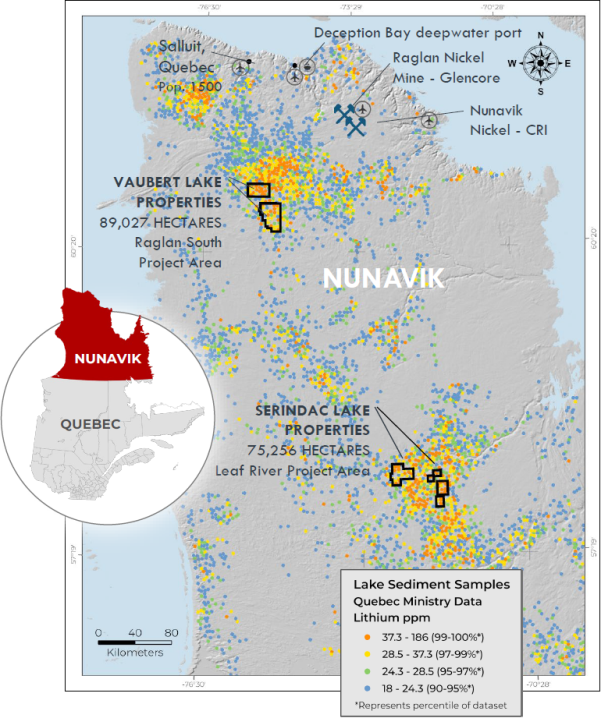
Full size / The heart of a new lithium play: Highest percentage samples underly Discovery Lithium‘s newly acquired properties. Geochemistry indicates an uncommon area-wide abundance of high percentile lithium samples in lake bottom sediments as identified in official Quebec government datasets.
Michael Gheyle, President and CEO of Discovery Lithium (formely ISM Resources Corp.), commented in a news-release on May 29: “We are excited to be at the forefront of Quebec’s emerging lithium frontier, a region boasting a deep-sea port and two operational nickel mines, including the Province’s largest at Raglan. Abundant outcrop exposure will expedite our exploration efforts. While this region has long been recognized for its nickel and gold potential, lithium has only recently come into focus. The addition of these two Claim blocks further solidifies our presence in North America.”
On August 8, 2023, the company announced to have closed the previously announced acquisition of the Vaubert Lake and Serindac Lake Properties. This acquisition encompasses strategically located claim blocks in 2 areas of Nunavik which have not previously been recognized for its high-grade lithium potential. Nunavik, which covers more than one-third of Québec’s land area, underscores the vast scale of opportunity in this geologically rich province. The acquisition provides Discovery Lithium with a substantial land package that holds great potential for spodumene-bearing lithium pegmatites.
On October 12, Michael Gheyle commented in a news-release: “2023 has been an eventful year for Discovery Lithium as we progress and build out our footprint as lithium explorers in Quebec. Our exploration approach received a massive kick-start when respected prospector Shawn Ryan brought us the results of a provincial study of lake bottom sediments that he found correlating data that pointed to a number of strategic acquisitions. The targets in Quebec are lithium-bearing pegmatites and as such, we are tailoring our exploration plans to get onto our properties quickly and efficiently to develop a comprehensive drill campaign to properly unearth the lithium potential in this red-hot region.”
On October 24, Discovery Lithium announced that as a result of encouraging preliminary results of its initial late summer sampling and mapping campaign, the company has elected to undertake an immediate 3-day-follow-up program on key Vaubert Lake claim targets of interest. During phase one of its growing multi-phase strategic exploration plan, the field team identified anomalous data occurrences considered highly prospective for lithium. This data is based on extensive cross-referenced mapping, a series of visual inspections of rock and soil sampling, along with field results from handheld LIBS (Laser Induced Breakdown Spectroscopy) analysis. Based on these encouraging preliminary results, the company has initiated an immediate second phase exploratory sampling campaign to further study the target locations and surroundings in greater detail prior to the onset of winter conditions. Per the initial sampling, all new samples from the follow-up program will also be sent to SGS Laboratories for analysis. The sample results, including the mapping and related data will be used by the company to determine the most prospective drill targets on the Vaubert Lake Project. All samples collected over the summer have been shipped to SGS Laboratories with assay results anticipated by the end of November. Based on these results the company will develop drill targeting and logistics for follow-up campaigns aimed at developing the properties for future valuation purposes. Michael Gheyle commented in that news-release: “Thanks to the work accomplished by our experienced exploration field team, we were able to mobilize a rapid reaction follow-up program as soon as we understood that the preliminary results are pointing us towards some highly intriguing mineralogy. The team’s efforts have allowed us to efficiently cover the entire Vaubert and Serindac Lake Projects in our quest for the next large lithium discovery in Quebec. To initiate successive exploration efforts less than 6 months post acquisition, demonstrates our commitment and ability to position Discovery Lithium as a leading resource exploration operation in Quebec.”
Pictures from the 2023-late-summer sampling and mapping program at the Vaubert Lake claim targets of interest (Source):
De-risk intelligently: Pegmatites and geology in a target-rich environment. Extensive historic Québec Government survey data mapped numerous pegmatites in multiple rock units. Geology reinforces the region as an excellent tectonic location for spodumene-bearing pegmatites across rock units.
Next steps may include:
1) Sampling, mapping, aerial surveys, and mobile x-ray fluorescence (XRF) testing.
2) Chip and channel sampling, assays, and detailed mapping.
3) Drill-testing best targets to validate occurrences, depth and extent of mineralization.
Science-Driven Discoveries
Highly recognized, award-winning prospector and project proponent Shawn Ryan has led the way in identifying the mining-friendly Nunavik region through his extensive soil studies and he has advised Discovery Lithium regarding the use of best practice fieldwork programs. Over the summer, the company engaged Ground Truth Exploration to deploy experienced research teams onto the Nunavik properties for an extensive mapping and sampling campaign.
Québec provincial lake sediment database points the way:
• The Vaubert Lake and Serindac Lake Properties include top sample values (99.9%) of the entire provincial database.
• The Vaubert Lake Properties consist of 2 holdings with the northern block (780 claims covering 32,687 hectares) and the southern block (7.5 km south with 1,334 claims covering 56,340 hectares). The claims were staked to encompass some of the highest concentration of lithium, cesium and rubidium lake sediment anomalies in the entire Québec Resources Ministry lake sediment database. There are 10 historically mapped pegmatite outcrops of note on the northern claim block with an additional 5 pegmatites indicated on the southern block.
• The Serindac Lake Properties consist of 4 individual holdings, with the larger one identified as Serindac West (868 claims covering 39,528 hectares) and Serindac East (consisting of 3 individual blocks for a total of 781 claims covering 35,728 hectares). The claims were staked to cover prospective geology with known pegmatites that show as extremely anomalous in LCT lake sediments elements of lithium, cesium and rubidium. The geology is a mix of basalt, mafic volcanic, granodiorite, tonalites, amphibolites, felsic volcanics and leucotonalites. Preliminary mapping (1998) was limited but identified mafic volcanics. The anomalous lake sediments are also associated with distinct trending regional structures.
Moving ahead with experts:
• Mobilization of a team of experienced GroundTruth personnel is planned to undertake an area-wide property traverse to identify, sample, and map pegmatite outcrops.
• Numerous area-wide outcrops on both properties offer accelerated exploration options and ability to expedite high-priority drill targets.
• Target generation is enhanced by constant aerial drone operations to enhance mapping and expedite sampling activity.
• Utilization of advanced tools, such as highly mobile rotary air blast drilling (RAB) equipment, allows for rapid sampling of multiple targets per day.
• On-site x-ray fluorescence (XRF) analysis of powdered samples allows for rapid documentation of prospective mineralization.
• Satellite transmissions ensure constant dataflow to management and advisory team allowing for rapid assessments and planning for target prioritization.
Eastern Québec Lithium Projects
Location: North Shore, Gulf of St. Lawrence, Québec. An underexplored region with tantalizing data and easy access to major global shipping routes and areas of interest with limited historic exploration.
Size: 10,420 hectares (104.2 km2)
Ownership: 100%
The Lac Robertson Project (2,091 hectares) is located immediately west of lake Robertson and encompasses 18 km2. Lake bottom sediments of Lac Robertson are highly anomalous in lithium and the lake overlies a large gravity and RMI anomaly. Taken together, these anomalies imply a fertile source intrusion underneath Lac Robertson. The Lac Robertson Project covers potential pegmatites visible in satellite imagery.
The Lac Belanger and Lac Ferland Projects (8,329 hectares) are on the north coast of the Gulf of St. Lawrence in Québec and encompass 80 km2 combined. The claims are located on metasedimentary terrane near fractionated granites that are potential source intrusions for LCT pegmatites. Pegmatites are described in the region by the geological survey of Québec and were mapped to the south along the coast where mapping occurred in detail. Lithium in lake sediments on the claims is up to 15 times enriched with respect to the immediate surroundings.
“Today we celebrate another milestone as we build our lithium exploration land position across Quebec. Our exploration and investment opportunities have grown considerably as we execute our district-scale approach to discovery in the explosive domestic lithium sector. Starting with our over 400,000 hectares of mineral claims north of the 55th parallel in the Nunavik region led by the world-renowned prospector Shawn Ryan, we now add our Route Du Nord claims in the heart of the proven and prolific James Bay lithium district. Additionally, we now also include what we believe may be a breakout find in the province’s eastern St. Lawrence north shore region adjacent to the nations major east coast ocean going shipping lanes. With these acquisitions, we continue to establish our commitment to building shareholder value and further believe that our “big picture” strategy will appeal to investors who appreciate our drive to follow the science aimed at unearthing Canada’s rich mineral legacy and regional potential to fuel domestic energy freedom for generations to come.” (Discovery Lithium‘s President and CEO, Michael Gheyle, on October 3, 2023)
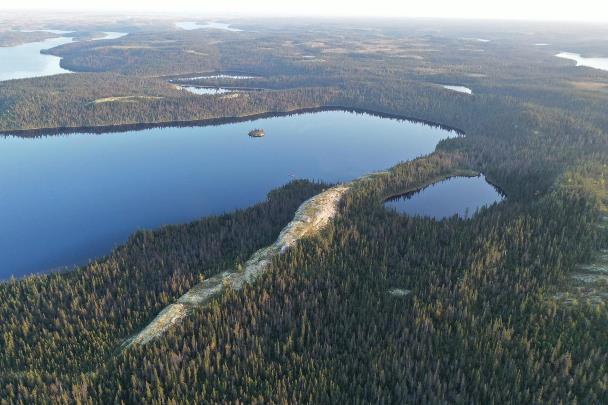
Full size / The sampling of a large pegmatite outcrop at the Lac Belanger Property in eastern Québec was announced on October 31 with assays pending. (Source)
On October 31, Discovery Lithium announced the verification of lithium prospective surface pegmatites at its recently acquired Lac Belanger and Lac Ferland claims in eastern Québec: “An exploration crew, provided by Axium Exploration Group, was tasked to prospect, map, and sample the claims in an effort to verify potential pegmatite occurrences identified in a high-resolution satellite imagery study of the claim area. Of particular note, a substantial pegmatite outcrop was confirmed on the Lac Belanger claim block and was determined to contain quantities of tourmaline and beryl. These minerals are indicative of a high degree of fractionation, a sign that spodumene may be present in the pegmatite or other pegmatites in the immediate vicinity. Rock samples were collected over the length of the pegmatite as well as nearby pegmatite occurrences and rock units across both claim blocks which have been transported for analysis.“
Michael Gheyle commented in that news-release: “The verification of these potential pegmatites at our recently acquired Lac Belanger and Lac Ferland claims is an exciting development for the company. We made the decision to acquire these claims because of the potential that we felt the ground held in this underexplored area of Quebec and we look forward to the continuation of our exploration program as we move towards defining a drill program for 2024.”
Route du Nord Lithium Project
Location: 575 km north of Val d’Or in the prolific lithium district in the James Bay Region of central Québec. The James Bay Lithium District host hundreds of exploration projects, 5 of which are advanced: Whabouchi, Corvette, Rose, James Bay, and Moblan. Crucially, the Québec Government and most local communities are strongly supportive of lithium mining. The Route du Nord Project has excellent infrastructure access with the Nemiscau hydroelectric installation located 5 km to the south.
Size: 5,972 hectares (59.72 km2); stretching 36 km east to west and parallel to and within 5 km of the 407 km long wilderness road known as the “Route du Nord“. Roughly 35 km to the east is the world-renowned Whabouchi Lithium Deposit.
Ownership: 100%
The Route Du Nord Project is located in the prolific James Bay District near 5 advanced lithium projects: Whabouchi (co-owned by Investissement Québec and Livent Corp.; current market capitalization: $2.6 billion USD), Corvette (Patriot Battery Metals Inc.; current market capitalization: $1.1 billion), Moblan (co-owned by Investissement Québec and Sayona Mining Ltd.; current market capitalization: $930 million AUD), Rose (Critical Elements Lithium Corp.; current market capitalization: $296 million), and James Bay (Allkem Ltd.). Note that mineralization outside of the Route Du Nord Project is no guarantee for mineralization on the Route Du Nord Project. The Route Du Nord Project is an exploration stage project.
Deposit-Type: Lithium in the region is found as spodumene pegmatites, many of which are large and near surface, making for relatively easy mining.
Geology: The Route Du Nord Project occurs within a regional thrust fault that extends and terminates in the Valiquette Pluton. The fault acted as a pathway for LCT (lithium, caesium, tantalum) pegmatite melt at the Whabouchi Project and may host other LCT pegmatites along strike. The Route Du Nord Project captures the continuation of the thrust fault into the Valiquette Pluton, making it highly prospective for LCT pegmatites.
Yesterday (November 7), Discovery Lithium announced the start of exploration at the Route Du Nord Project. Michael Gheyle commented: ”An exploration crew provided by GroundTruth Exploration is currently sampling and prospecting for lithium and will be on-site for approximately ten days. This comprehensive first pass of exploration on a project never previously explored for lithium will serve to identify prospective areas and targets for potential follow-up exploration. We look forward to furthering our understanding of this exciting project with our goal of undertaking a comprehensive exploration in 2024 aimed at realizing the potential added value to our growing portfolio of Quebec based lithium-focused assets.”
Where demand meets supply: Positioned to supply the growing Québec and US markets

Full size / Québec is the fastest growing hard-rock lithium source in the nation. Due to being mining-friendly and infrastructure growth-oriented, this area is believed to be ripe for opportunity on a massive scale.

Full size / The North America lithium compound market size reached 60,776 t LCE in 2022. Looking forward, experts predict the market to reach 119,320 t LCE by 2028, exhibiting a CAGR of 11.9% during 2022-2028 according to Research and Markets (2023).

Full size / The global lithium market is projected to grow from $3.83 billion in 2021 to $6.62 billion USD in 2028 at a CAGR of 8.1% during 2021-2028 (Fortune Business Insights, 2022): “According to our researchers, prompt progressions in the rechargeable batteries for laptops, mobile phones, Electric Vehicles (EVs), as well as digital cameras, directed by the growth in the Li-ion battery market across the world shall power the product demand. Growing demand for batteries, glass & ceramics, lubricants, foundry and others is anticipated to nurture the growth of the market.“
Excerpts from “Threatened by shortages, electric car makers race for supplies of lithium for batteries“ (The Associated Press on June 28, 2023): “Threatened by possible shortages of lithium for electric car batteries, automakers are racing to lock in supplies of the once-obscure “white gold” in a politically and environmentally fraught competition from China to Nevada to Chile... A shortfall in lithium supplies would be an obstacle for government and industry plans to ramp up sales to tens of millions of electric vehicles a year. It is fueling political conflict over resources... “We already have that risk” of not being able to get enough, said GM’s chief financial officer, Paul A. Jacobson, at a Deutsche Bank conference in mid-June... Global lithium output is on track to triple this decade, but sales of electric SUVs, sports cars and sedans that rose 55% last year threaten to outrun that. Each battery requires about eight kilograms (17 pounds) of lithium, plus cobalt, nickel and other metals. “There will be a shortage of EV battery supplies,” said Joshua Cobb, senior auto analyst for BMI. Adding to uncertainty, lithium has emerged as another conflict in strained U.S.-Chinese relations. Beijing, Washington and other governments see metal supplies for electric vehicles as a strategic issue and are tightening controls on access. Canada ordered three Chinese companies last year to sell lithium mining assets on security grounds... Despite rising output, the industry may face shortages of lithium and cobalt as early as 2025 if enough isn’t invested in production, according to Leonardo Paoli and Timur Gul of the International Energy Agency. “Supply side bottlenecks are becoming a real challenge,” said Paoli and Gul in a report last year.“
Excerpts from “Lithium Scarcity Pushes Carmakers Into the Mining Business“ (The New York Times on July 2, 2023): “Ford, General Motors and others are striking deals with mining companies to avoid raw material shortages that could thwart their electric vehicle ambitions. Eager to avoid falling further behind Tesla and Chinese car companies, many Western auto executives are bypassing traditional suppliers and committing billions of dollars on deals with lithium mining companies. They are showing up in hard hats and steel-toed boots to scope out mines in places like Chile, Argentina, Quebec and Nevada to secure supplies of a metal that could make or break their companies as they move from gasoline to battery power... Established mining companies don’t have enough lithium to supply the industry as electric vehicle sales soar... So car companies are scrambling to lock up exclusive access to smaller mines before others swoop in... The miners appear to be the big winners. Their deals with the car companies typically assure them fat profits and make it easier for them to borrow money or sell shares.“
Excerpts from “Mining the Arctic’s critical minerals is vital for Canada’s sovereignty, Northern prosperity“ (The Globe and Mail on June 12, 2023): “Canada launched a new Arctic and Northern Policy Framework in 2019, supported by $700-million in dedicated funding. It correctly calls on all of Canada to strengthen our sovereignty, while building the kind of economic future northerners want, and doing it in a way that protects the environment. This was a positive first step... Advancing the development of a mining industry in the North is clearly in Canada’s national interest. Doing so could make the region a leading supplier of minerals required for the global energy transition, while also creating economic opportunity and prosperity for Indigenous peoples. It would also solidify Canada’s claim to sovereignty through an increased business presence... An Arctic and Northern Strategy that builds up the people and economy of the North by supporting the development of mineral resources across the Arctic is by far the best opportunity we have to secure our borders and create a thriving Northern economy.“
ESN Gold Project
Technical Report: “NI 43-101 Technical Report on the ESN Project“ (March 2022)
Location: White Pine Mining District, Nevada (USA), 57 km west of the city Ely. Nevada was recently ranked as the most attractive mining jurisdiction in the world with numerous mines currently in operation. Nevada is one of the world‘s leading gold producing regions and by far the leading gold producing state with around 75% of gold production in the United States.
Size: 267 hectares (2.7 km2)
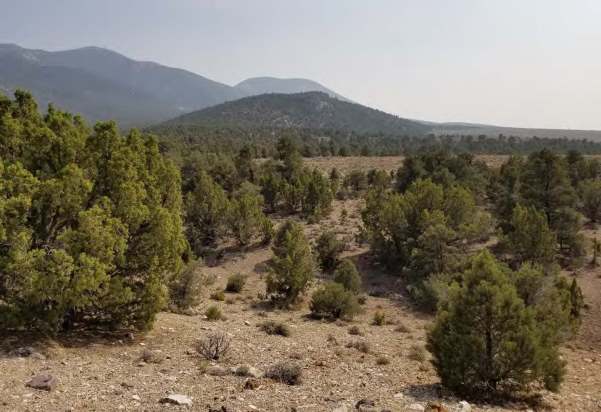
Full size / “Indications are that the ESN Project has the potential to host one or more Carlin-type mineral deposits. The literature is replete with examples of other Carlin-type deposits that have undergone many episodes of exploration before a mineable deposit was discovered.“ (Source)
Ownership: 100% subject to 4% NSR (Net Smelter Royalty).
Deposit-Type: The ESN Project is envisioned to have potential for a Carlin-type gold deposit. Carlin-type gold deposits are epigenetic, disseminated, auriferous pyrite (marcasite or arsenopyrite) deposits characterized by carbonate dissolution, argillic alteration, sulfidation, and silicification of typically calcareous sedimentary rocks. The deposits occur in clusters or along trends and exhibit both structural and stratigraphic controls. The ESN Property occurs at the intersection of the Battle Mountain and Bald Mountain trends [see below map and note that some of the biggest gold deposits are found at the intersection of trends]. ESN shares many of the features that have been used to define Carlin-type gold deposits. There are several nearby Carlin-type gold deposits that have similar features to ESN. The adjacent properties have all been described as having analogous styles of mineralization, are preferentially deposited in the same stratigraphic horizons and have the same alteration patterns and pathfinder elements as ESN. These are the Green Springs Deposit 16 km to the south of ESN, the Easy Junior/Gold Rock Deposit 18 km southwest, the Pan Mine 18 km to the west and the Griffon Deposit 29 km to the southeast. Green Springs, Easy Junior/Gold Rock and Griffon have all had past production and are actively being explored at this time (as of March 2022). The Pan Mine is currently in production, having produced >45,000 ounces of gold in 2020 with its operator Fiore Gold Ltd. (TSX.V: F) calling Pan “the cash engine“ (2020 Proven & Probable Reserves: 23.5 million t @ 0.42 g/t gold containing 290,500 ounces gold). In January 2022, Calibre Mining Corp. (TSX: CXB) completed the take-over of Fiore including its flagship, the Pan Gold Mine. Note that mineralization outside of the ESN Project is no guarantee for mineralization on the ESN Project. The ESN Project is an exploration stage project.
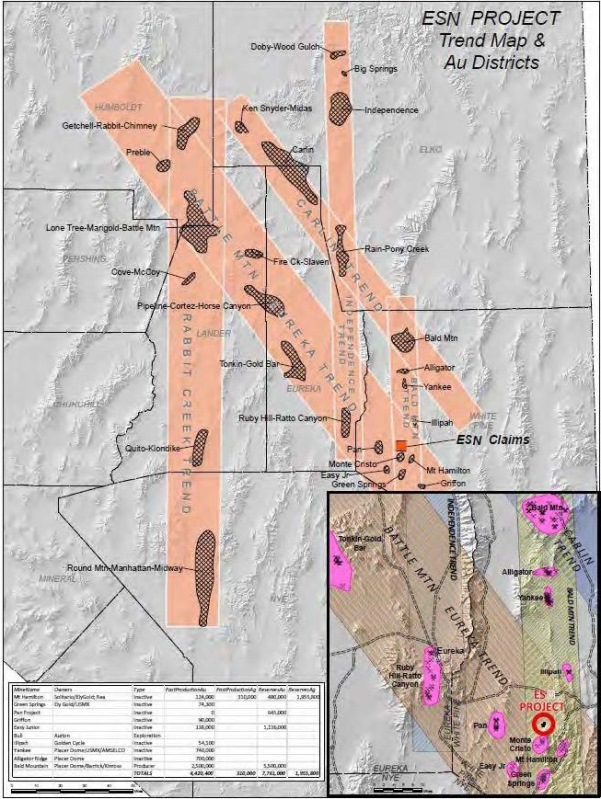
Full size / Major gold mine trends in northern Nevada in relation to the ESN Project. (Source)
“Forty years of mining and numerous studies have provided a detailed geologic picture of [Carlin-type gold deposits], yet a comprehensive and widely accepted genetic model remains elusive. The genesis of the deposits has been difficult to determine owing to difficulties in identifying and analyzing the fine-grained, volumetrically minor, and common ore and gangue minerals, and because of postore weathering and oxidation. In addition, other approximately contemporaneous precious metal deposits have overprinted, or are overprinted by, Carlin-type mineralization. The deposits occur in clusters or along trends and exhibit both structural and stratigraphic controls... In recent years, many gold mines in northern Nevada have had success drilling beneath the open pit reserves to intersect the high-grade feeder structures of their deposits. The ESN Project occurs at the intersection of the Battle Mountain and Bald Mountain trends.“ (Source)
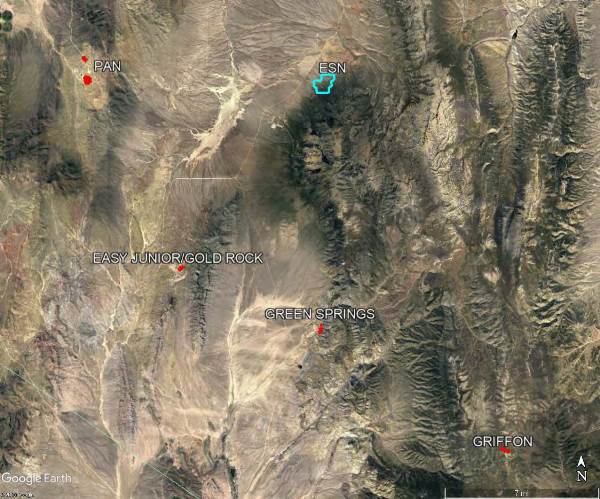
Full size / Google Earth image with the locations of adjacent gold properties relative to ESN. (Source)
Exploration Plans: On June 12, 2023, the company announced that an Enzyme Leach (EL) geochemical survey is planned following the completion of a helicopter-borne geophysical survey to start in mid-June. The primary objective of the geophysical program is to accurately map the dominant magnetic and geological strike. By aligning the traverse lines in the N118 direction, the survey ensures that the magnetic and geological features in that specific orientation are thoroughly captured and represented in the final mapping. This alignment helps to provide a comprehensive understanding of the magnetic and geological structures present on the ESN Property. Michael Gheyle, commented on May 18: “This geophysical survey represents one of many strategic steps we are taking in our pursuit of making a significant gold discovery on the ESN project. With Prospectair’s cutting-edge technology and our shared dedication, we are poised to make positive strides in 2023.“ On May 23, it was noted that the first Enzyme Leach program was completed on 138 samples in June 2021 and that “this second Enzyme Leach Program will include 226 samples covering the recommended area for analysis and complement the previous information already received by the Company. Once completed a further recommendation would be to drill the areas favorably indicated by the Enzyme Leach soil sampling and the geophysical survey. This drill phase would be dependent on the results of the sampling and geophysical phases.“ Michael Gheyle commented: “We are looking forward to the analysis of both the geochemical and geophysical exploration programs which will help determine the best possible drill targets on the ESN Property.”
Interpretations & Conclusions: According to the Technical Report (2022): “The ESN Project has undergone several past exploration programs by various companies. It is believed that at least 50 reverse circulation drill holes have been drilled and several hundred rock and soil samples have been collected and analyzed. Unfortunately, much of the data from these programs have been lost. However, the data that are available show encouraging results. Numerous surface rock samples have contained anomalous gold values with values greater than 5 g/t. All the prominent similarities to Carlin-type gold deposits and to the nearby properties with gold production have been found to be present at ESN. Such results require follow-up exploration. Indications are that the ESN Project has the potential to host one or more Carlin-type ore deposits. It is the author’s opinion that further exploration at ESN is definitely warranted. From the Enzyme Leach survey, three target zones have been indicated from what is currently known from past exploration programs. These areas should be the focus of future exploration expenditures.“
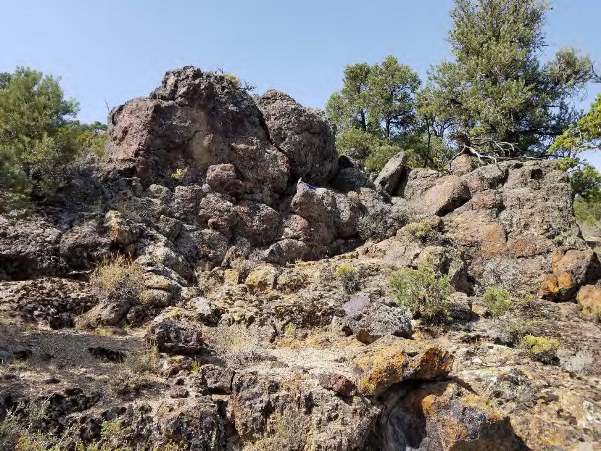
Full size / Jasperoid outcrop in the Chainman Shale on the ESN Property. “Alteration and mineralization are widespread in the Project area and take a variety of styles, largely influenced by rock type. Jasperoidal silicification is the most conspicuous alteration. The jasperoids are present as two separate events and are pervasively developed in the highly fractured Joana Limestone. They almost everywhere accompanied by strong hematite and limonite staining. The jasperoid forms bold cliffs and bluffs in the southern portion of the Project. Locally, the jasperoid is overprinted by younger jasperoid breccia and fault fill. Some of the jasperoids are marked by drusy quartz and less common small white quartz veins.“ (Source)
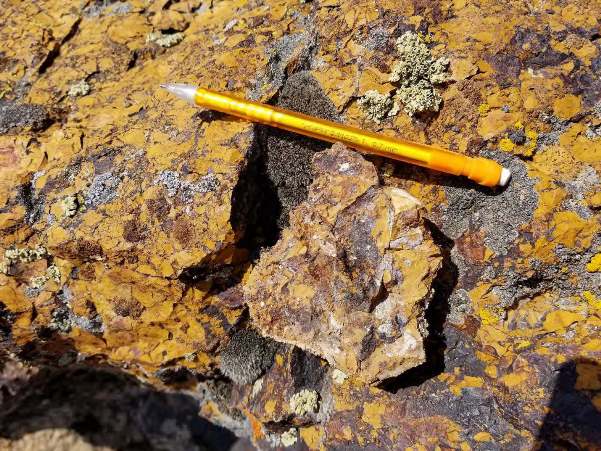
Full size / Jasperoid breccia within the Chainman Shale.on the ESN Property. “Strong hematite-limonite-geothite impregnations and flooding are found locally. They are sub-gossanous to massive with variable silica and are generally confined to the Chainman Shale, although locally are also present on structures within the Joana. Bold red-brown and maroon fracture coatings and weathered surfaces are common in the sandier portions of the Chainman and may reflect the continental derivation of these sediments or oxidation sometimes associated with Carlin-type alteration. Limy beds in the Chainman are weakly bleached to strongly jasperoidal near structures.“ (Source)
Geology: The ESN Project is located on the western edge of the White Pine Mountains in the White Pine Mining District which are in the eastern sector of the Great Basin in east-central Nevada. The White Pine Mountains are one of the many mountain ranges that have been uplifted along north-striking, steeply dipping normal faults formed during extension that formed the Great Basin Physiographic Province. This region was subjected to east-west compression during the Sevier and Laramide orogenies in the Cretaceous and early Tertiary. This compression resulted in the formation of broadly north-trending folds and thrust faults. Mesozoic compression is marked by thrust displacements generally confined to specific units. Extension beginning in the middle Tertiary has affected much of southwestern North America, resulting in the Basin and Range style of physiography that is present from southern Oregon to central Mexico. Cambrian through Pennsylvanian strata are dominated by carbonates, with lesser siliciclastics in a section with several important regional unconformities. Late Mesozoic felsic intrusive centers are restricted to district scale features and frequently are sites of mineralization (i.e., Mt. Hamilton, Bald Mtn.). The majority of the ESN Property is concealed by a veneer of recent alluvium, with outcropping Paleozoic sediments exposed over about one-third of the area; these rocks include the Devils Gate Limestone, Pilot Shale, Joanna Limestone, and Chainman Shale. Each of these units is an important host for mineralization in the region. These units are present in an upright stratigraphic section, cut by steep normal faults. Scattered erosional windows exposing bedrock indicate the overlying alluvium is relatively thin. No exposures of igneous rock have been observed. (Source)
Koster Dam Gold Project
Technical Report: “NI 43-101 Technical Report on the Koster Dam Project with recommendations for continuing exploration“ (August 2022)
Location: Clinton Mining Division in south-central British Columbia, 11 km north of the former producing Blackdome Gold-Silver Mine and 80 km southwest of the city of Williams Lake.
Size: 4,535 hectares (45 km2)
Ownership: A joint venture was formed in December 2021, with Discovery Lithium having a 45% interest and Cariboo Rose Resources Ltd. (TSX.V: CRB) having a 55% interest. Each party contributes pro rata to exploration expenditures.
Deposit-Type: Exploration efforts at Koster Dam have targeted gold mineralization associated with Cretaceous to Eocene age volcanic and sediment rocks similar to the mineralization found at the nearby past-producing Blackdome Mine (225,000 ounces of gold and 547,000 ounces of silver from 305,614 t in 8 years; 2010 Indicated Resources: 144,500 t @ 11.29 g/t gold and 50 g/t silver). Gold mineralization at Blackdome is related to quartz veins within structures related to doming.
Exploration Plans: On June 12, 2023, the company announced that the company is currently in discussions with its joint venture partner, Cariboo Rose Resources, to define the extent of the 2023 exploration plans and that a news-release is expected upon the final exploration plans being determined.
Recommendations: According to the Technical Report (2022): “A very strong and consistent silt and sluiced silt anomaly is open for expansion to the southwestern quadrant of the claim group on a small, south flowing drainage. Another significant silt and sluiced silt anomaly exists immediately west of the current claim boundary on a drainage flowing west from the property. The area between these diverging drainages is the highest priority target. In order to narrow the target area, it is recommended that further sampling be completed in the region of these two drainages on a more detailed spacing of 100 metres. Additional, comprehensive grid work should be completed throughout the anomalous region of the property. This grid should cover each of the drainages that returned anomalous gold values as well as the area with significant gold in rock samples. A 50 line kilometer grid with lines spaced 100 metres apart and soil samples collected at 25 metre intervals along the lines should provide sufficient sample density to identify a covered target. Approximately 30 line kilometres of induced polarization surveying should be completed along the grid in the most promising area of the silt and soil surveying.“
Geology: The Koster Dam Property falls within the Cretaceous/Eocene Age Nechako Basin which has recently become a significant gold environment with targets including the Newton Hill occurrence located 90 km to the west, the Blackwater Davidson occurrence located 220 km to the northwest and the Blackdome Mine located 11 km to the south. Heavy mineral samples from several small drainages within the area of the Koster Dam claims returned very high gold values with some exceeding 10 g/t. A subsequent search of assessment records indicates that part of the current claims was staked a few years later and re-sampled confirming the initial results with sample results of up to 20 g/t gold. The assessment report indicates that only 4 rock samples were collected and it appears that follow-up was minimal. (Source)
“Gold demand hit 4,740 tonnes in 2022 – marking an 11-year high and a 15.3% increase year-over-year. Furthermore, gold also saw a record annual price average of $1,800 an ounce on the London Bullion Market Association (LBMA). And a nine-year high for retail bar-and-coin investment. But what’s really driving demand for gold has been aggressive central bank buying... In fact, an annual poll of 83 central banks – managing a combined $7 trillion in foreign exchange reserves – showed more than 66% of those polled believed central banks would increase gold holdings in 2023.“ (Source)
“Gold mine production remains relatively weak – meanwhile, new discoveries have all but disappeared. Since 2018, gold mine output has actually declined. For instance, gold production hit 3,612 tonnes in 2022 – which is still about 1.5% less than what it was in 2018 (its peak)... Put simply, over-capacity plagued the gold mining sector until 2018 – when peak gold output was finally hit – and majors finally threw in the towel. (In that chart above, notice how annual gold production growth finally fell negative in 2018 – the first time since 2008). Since then, gold production has declined from its peak...“ (Source)
“S&P Global wrote back in mid-2022 that there’s been a steady and sharp decline in major gold discoveries over the last 30+ years... In fact, only 28 of the 341 deposits analyzed were discovered over the past decade – containing just 171.8 million ounces. That means only 6% of all gold since 1990 was discovered between 2012-2022. Meanwhile, exploration budgets have increased substantially in that same period.“ (Source)
“This raises the question whether peak gold has finally arrived. The low-hanging fruit has already been mined, and giant deposits containing many millions of ounces of gold are not being discovered at the same rate as they once were.“ (Source)
Management & Directors
MICHAEL GHEYLE (President, CEO and Director)
Michael has worked for over 25 years in international capital markets. His experience includes wealth management, derivative trading, corporate finance, institutional sales, M&A, venture capital and private equity. Over the years, Michael has developed a passion for assisting companies navigate the public markets both in North America and in Europe. He has helped multiple companies across many industry sectors raise in excess of $100 million in aggregate. He also held executive, board and advisory positions with a number of public and private companies. Most recently, Michael was a Director at FBP Capital Corp. until 2019, and Vice President of Plutus Bridge Capital until 2021.
JODY BELLEFLEUR (CFO)
Jody brings over 20 years’ experience as a corporate accountant. She is responsible for all aspects of regulatory financial reporting, including the preparation of quarterly and annual financial statements, management discussion and analysis reports and government tax reporting. Prior to her work with publicly traded companies, Jody was the controller of a private manufacturing company. Since 2008, she has been involved exclusively in providing services to both public and private companies in the junior mining sector.
SHAWN RYAN (Prospector)
Shawn brings over 20 years of experience prospecting for high value mineralization across the Yukon. A global leader in his field, his prospecting and specialization on advanced soil work led to the discovery of the millions of gold ounces found in the Golden Saddle & Arc, Coffee, and QV gold resources. His previous successes have seen Shawn recognized as the 2011 PDAC Prospector of the Year Award, and recipient of the 2010 Spud Huestis Award and 1998 Yukon Chamber of Mines Prospector of the Year Award. He is always examining new opportunities and is currently advancing extensive gold discovery programs in Newfoundland & Labrador and has recently turned his interest toward lithium exploration in the massive underexplored Nunavik region of Northern Québec. Shawn continues to be an active participant with his technical teams, constantly improving efficiencies with his extensive and highly thorough methodological exploration techniques.
RYAN ARTHUR (Director and Audit Committee)
Ryan is currently the president of CR7 Investments Inc., which actively identifies promising mining and technology projects for purpose of investment as well as technical and strategic partnership to ensure the growth and success of these projects. His professional experience spans various industries including retail, mining, industrial, and technology. Ryan has assisted in financing several public companies and brings a plethora of knowledge in the capital markets. He has acted as a Director of Nova Lithium Corp. (OTC: NVLIF) and Discovery Lithium Inc. (CSE: DCLI) since 2021. Previous to his career in management, Ryan was a varsity athlete for the University of British Columbia’s Men‘s Soccer Program and had spent a short period overseas pursuing a professional career as an athlete.
ERIC NEGRAEFF (Director)
An accomplished entrepreneur with over 20 years of professional capital markets experience, Eric is Vice President of Corporate Development at Incite Capital Markets. He previously served at C.M. Oliver & Company and at PI Financial. As a successful proprietary trader, he created a profitable division designed to take advantage of unique arbitrage opportunities. He went on to manage a proprietary trading desk designing trading strategies for high net worth and institutional clientele. With over a decade specializing in raising capital for small to mid-size companies at PI Financial, he joined Incite Capital Markets working to develop fundraising, strategic planning, investor relations, and corporate communication services.
DR. JACOB (JAAP) VERBAAS, P. Geo (Director)
Jaap is an exploration geologist with an Master‘s degree from Utrecht University and a PhD from Simon Fraser University. His focus has been regional targeting and identification of exploration strategies for discovery-stage projects. He found and staked the HSP Nickel-Copper Project during his time as VP Exploration with Go Metals Corp. (CSE: GOCO), a company that drilled the first nickel intercept in the Havre St. Pierre anorthosite complex in Québec. He was also CEO of CAVU Energy Metals Corp. until its merger with Alpha Copper Corp. (CSE: ALCU), and currently serves as CEO of Gama Explorations Inc. (CSE: GAMA). Jaap is a registered Professional Geologist with EGBC.
MIKE HODGE (Director)
Mike began his exploration career on the original staking program for the Blue River Tantalum and Niobium Project in 1999 for Commerce Resources Corp. (TSX.V: CCE). Subsequently, he has worked on more than 25 exploration projects across North America. His most recent field work was Operations Manager for a quarry on Vancouver Island. Mike‘s marketing experience was developed through his extensive participation in global resource conferences and workshops during the past decade, and he has enjoyed considerable success raising capital, including for a number of portfolio companies within Zimtu Capital Corp. (TSX.V: ZC).
Company Details

Discovery Lithium Inc.
Suite 1450 – 789 West Pender Street
Vancouver, BC, V6C 1H2 Canada
Phone: +1 778 868 2226
Email: info@discoverylithium.com
www.discoverylithium.com
Listing Date: September 29, 2022
CUSIP: 45029H / ISIN: CA25472M1077
Shares Issued & Outstanding: 41,432,584
Canadian Symbol (CSE): DCLI
Current Price: $0.59 CAD (11/07/2023)
Market Capitalization: $25 Million CAD

German Ticker / WKN: Q3Q0 / A3EFKA
Current Price: €0.342 EUR (11/07/2023)
Market Capitalization: €14 Million EUR
Contact:
www.rockstone-research.com
Disclaimer: This report, the referenced news-releases and video contain forward-looking information or forward-looking statements (collectively "forward-looking information") within the meaning of applicable securities laws. Forward-looking information is typically identified by words such as: "believe", "expect", "anticipate", "intend", "estimate", "potentially" and similar expressions, or are those, which, by their nature, refer to future events. Rockstone Research, Discovery Lithium Inc. and Zimtu Capital Corp. caution investors that any forward-looking information provided herein is not a guarantee of future results or performance, and that actual results may differ materially from those in forward-looking information as a result of various factors. The reader is referred to Discovery Lithium Inc.´s public filings for a more complete discussion of such risk factors and their potential effects which may be accessed through its profile on SEDAR at www.sedar.com. Please read the full disclaimer within the full research report as a PDF (here) as fundamental risks and conflicts of interest exist. The author, Stephan Bogner, currently does not own any equity of Discovery Lithium Inc., however he owns equity of Zimtu Capital Corp. and thus will profit from volume and price appreciation of this stock. The author is being paid by Zimtu Capital Corp. for the preparation, publication and distribution of this report, whereas Zimtu Capital Corp. holds an equity position of Discovery Lithium Inc. and thus will profit from volume and price appreciation. Discovery Lithium Inc. pays Zimtu Capital Corp. to provide this report and other investor awareness services.
Disclaimer and Information on Forward Looking Statements: Rockstone Research, Zimtu Capital Corp. (“Zimtu“) and Discovery Lithium Inc.(“DCLI“) caution investors that any forward-looking information provided herein is not a guarantee of future results or performance, and that actual results may differ materially from those in forward-looking information as a result of various factors. The reader is referred to the DCLI‘s public filings for a more complete discussion of such risk factors and their potential effects which may be accessed through its documents filed on SEDAR at www.sedar.com. All statements in this report, other than statements of historical fact should be considered forward-looking statements. Much of this report is comprised of statements of projection. Statements in this report that are forward looking include that DCLI, or any other company or market will perform as expected; that exploration has or will discover a mineable deposit; that this could be North America’s next district-scale lithium discovery; that it is believed that the much larger Nunavik region holds excellent potential as a breakout lithium district; that DCLI is primarily looking for the next lithium district in under-explored regions; that Ryan believes he’s found one of the most promising potential lithium formations in the world, and that he believes this field could someday rival anything found in South America or Australia; that abundant outcrop exposure will expedite DCLI’s exploration efforts; that the acquisition provides Discovery Lithium with a substantial land package that holds great potential for spodumene-bearing lithium pegmatites; that DCLI is tailoring its exploration plans to get onto its properties quickly and efficiently to develop a comprehensive drill campaign to properly unearth the lithium potential in this red-hot region; that DCLI has initiated an immediate second phase exploratory sampling campaign to further study the target locations and surroundings in greater detail prior to the onset of winter conditions; that all new samples from the follow-up program will also be sent to SGS Laboratories for analysis; that the sample results, including the mapping and related data will be used by the company to determine the most prospective drill targets on the Vaubert Lake Project; that assay results are anticipated by the end of November, and that based on these results the company will develop drill targeting and logistics for follow-up campaigns aimed at developing the properties for future valuation purposes; that DCLI is on a quest for the next large lithium discovery in Quebec; that next steps may include: 1) Sampling, mapping, aerial surveys, and mobile x-ray fluorescence (XRF) testing; 2) Chip and channel sampling, assays, and detailed mapping; 3) Drill-testing best targets to validate occurrences, depth and extent of mineralization; that anomalies imply a fertile source intrusion underneath Lac Robertson; that the Lac Robertson Project covers potential pegmatites visible in satellite imagery; that DCLI continues to establish its commitment to building shareholder value and further believes that its “big picture” strategy will appeal to investors who appreciate its drive to follow the science; that the Québec Government and most local communities are strongly supportive of lithium mining; that lithium in the region is found as spodumene pegmatites, many of which are large and near surface, making for relatively easy mining; that a thrust fault acted as a pathway for LCT pegmatite melt at the Whabouchi Project and may host other LCT pegmatites along strike; that t he Route Du Nord Project captures the continuation of the thrust fault into the Valiquette Pluton, making it highly prospective for LCT pegmatites; note that mineralization outside of DCLI’s projects is no guarantee for mineralization on the properties from DCLI, and that all of DCLI’s projects are early-stage exploration projects; that s diversified portfolio allows DCLI to manage field crews, logisitics, and economics as part of a larger strategic plan for the entire region; that Québec is mining-friendly and infrastructure growth-oriented, and that this area is believed to be ripe for opportunity on a massive scale; that looking forward, experts predict the market to reach 119,320 t LCE by 2028, exhibiting a CAGR of 11.9% during 2022-2028; that the global lithium market is projected to grow from $3.83 billion in 2021 to $6.62 billion USD in 2028 at a CAGR of 8.1% during 2021-2028; that prompt progressions in the rechargeable batteries for laptops, mobile phones, Electric Vehicles (EVs), as well as digital cameras, directed by the growth in the Li-ion battery market across the world shall power the product demand; that growing demand for batteries, glass & ceramics, lubricants, foundry and others is anticipated to nurture the growth of the market; that threatened by possible shortages of lithium for electric car batteries, automakers are racing to lock in supplies of the once-obscure “white gold” in a politically and environmentally fraught competition from China to Nevada to Chile; that global lithium output is on track to triple this decade, but sales of electric SUVs, sports cars and sedans that rose 55% last year threaten to outrun that; that there will be a shortage of EV battery supplies; that despite rising output, the industry may face shortages of lithium and cobalt as early as 2025 if enough isn’t invested in production; that the more lithium in these lake sediments, the higher the chances that lithium-rich pegmatites are somewhere near-by; that geochemistry indicates an uncommon area-wide abundance of high percentile lithium samples in lake bottom sediments; that GroundTruth Exploration has been engaged to plan and execute an exploration work program; that target generation is enhanced by constant aerial drone operations to enhance mapping and expedite sampling activity; that utilization of advanced tools, such as highly mobile rotary air blast drilling (RAB) equipment, allows for rapid sampling of multiple targets per day; that satellite transmissions ensure constant data-flow to management and advisory team allowing for rapid assessments and planning for target prioritization; that the miners appear to be the big winners, and that their deals with the car companies typically assure them fat profits and make it easier for them to borrow money or sell shares; that indications are that the ESN Project has the potential to host one or more Carlin-type mineral deposits; that an Enzyme Leach (EL) geochemical survey is planned at ESN following the completion of a helicopter-borne geophysical survey to start in mid-June; that this geophysical survey represents one of many strategic steps DCLI is taking in its pursuit of making a significant gold discovery on the ESN project; that DCLI is poised to make positive strides in 2023; that this second Enzyme Leach Program will include 226 samples covering the recommended area; that once completed a further recommendation would be to drill the areas favorably indicated by the Enzyme Leach soil sampling and the geophysical survey; that the analysis of both the geochemical and geophysical exploration programs will help determine the best possible drill targets on the ESN Property; that a news-release is expected upon the final exploration plans being determined for Koster Dam; that more than 66% of those polled believed central banks would increase gold holdings in 2023; that this raises the question whether peak gold has finally arrived; that it is believed that the much larger Nunavik region holds excellent potential as a breakout lithium district; that a substantial pegmatite outcrop was confirmed on the Lac Belanger claim block and was determined to contain quantities of tourmaline and beryl, and that these minerals are indicative of a high degree of fractionation, a sign that spodumene may be present in the pegmatite or other pegmatites in the immediate vicinity, and that assays are pending; that an exploration crew provided by GroundTruth Exploration is currently sampling and prospecting for lithium and will be on-site for approximately ten days at the Route Du Nord Project; that this comprehensive first pass of exploration on a project never previously explored for lithium will serve to identify prospective areas and targets for potential follow-up exploration; that we look forward to furthering our understanding of this exciting project with our goal of undertaking a comprehensive exploration in 2024 aimed at realizing the potential added value to our growing portfolio of Quebec based lithium-focused assets. Such statements involve known and unknown risks, uncertainties and other factors that may cause actual results or events to differ materially from those anticipated in these forward-looking statements. There can be no assurance that such statements will prove to be accurate, as actual results and future events could differ materially from those anticipated in such statements. Risks and uncertainties include: The receipt of all necessary approvals and permits for exploration and mining; the ability to find sufficient mineralization to mine; uncertainty of future production, uncertain capital expenditures and other costs; financing and additional capital requirements for exploration, development and construction of a mine may not be available at reasonable cost or at all; mineral grades and quantities on the projects may not be as high as expected; samples found to date and historical drilling may not be indicative of any further potential on the properties; that mineralization encountered with sampling and drilling will be uneconomic; that the targeted prospects can not be reached; the receipt in a timely fashion of further permitting; legislative, political, social or economic developments in the jurisdictions in which DCLI carries on business may hinder progress; there may be no agreement with neighbors, partners or government on developing the respective projects or infrastructure; operating or technical difficulties or cost increases in connection with exploration and mining or development activities; the ability to keep key employees and operations financed; what appear at first to be similarities with operating mines and projects may not be substantially similar; share prices and market valuations of DCLI and other companies may fall as a result of many factors, including those listed here and others listed in the companies’ and other mining exploration company disclosure; and the resource prices available when the resource is mined may not be sufficient to mine economically. Accordingly, readers should not place undue reliance on forward-looking information. Rockstone and the author of this report do not undertake any obligation to update any statements made in this report except as required by law. As per DCLI’s financial statements for the six months ended July 31, 2023, filed on SEDAR: “The Company is exposed in varying degrees to a variety of financial instrument related risks. The Board of Directors approves and monitors the risk management processes, inclusive of counterparty limits, and controlling and reporting structures. The type of risk exposure and the way in which such exposure is managed is provided as follows: (a) Credit risk: Credit risk is the risk that one party to a financial instrument will fail to discharge an obligation and cause the other party to incur a financial loss. The Company’s primary exposure to credit risk is on its cash held in bank accounts. The Company has deposited the cash with its bank from which management believes the risk of loss is remote. (b) Liquidity risk: Liquidity risk is the risk that the Company will not be able to meet its financial obligations as they become due. There can be no assurance of continued access to significant equity funding. As at July 31, 2023, the Company had cash of $2,364,501 (January 31, 2023 - $1,070,508). (c) Market risk: Market risk is the risk that changes in market prices, such as foreign exchange rates, interest rates and equity prices will affect the Company’s income or the value of its holdings of financial instruments. The objective of market risk management is to manage and control market risk exposures within acceptable parameters, while optimizing the return. The Company considers this risk to be minimal. (d) Interest rate risk: Interest rate risk is the risk that the fair value of future cash flows of a financial instrument will fluctuate because of changes in market interest rates. The Company is exposed to interest rate risk, from time to time, on its cash balances. Surplus cash, if any, is placed on call with financial institutions. (e) Commodity Price Risk: The ability of the Company to finance the exploration and development of its properties and the future profitability of the Company is directly related to the market price of the primary minerals identified in its mineral properties. Mineral prices fluctuate on a daily basis and are affected by a number of factors beyond the Company’s control. A sustained, significant decline in the prices of the primary minerals or in the share prices of junior mineral exploration companies in general, could have a negative impact on the Company’s ability to raise additional capital. Sensitivity to commodity price risk is remote since the Company has not established any reserves or production.” Note that mineral grades and mineralization described in similar rocks and deposits on other properties are not representative of the mineralization on DCLI’s properties, and historical work and activities on its properties have not been verified and should not be relied upon. Also note that surface sampling does not necessarily correlate to grades that might be found in drilling but solely shows the potential for minerals to be found at depth through drilling below the surface sampling anomalies.
Disclosure of Interest and Advisory Cautions: Nothing in this report should be construed as a solicitation to buy or sell any securities mentioned. Rockstone, its owners and the author of this report are not registered broker-dealers or financial advisors. Before investing in any securities, you should consult with your financial advisor and a registered broker-dealer. Never make an investment based solely on what you read in an online or printed report, including Rockstone’s report, especially if the investment involves a small, thinly-traded company that isn’t well known. The author of this report, Stephan Bogner, is paid by Zimtu Capital, a TSX Venture Exchange listed investment company. Part of the author’s responsibilities at Zimtu Capital is to research and report on companies in which Zimtu Capital has an investment. So while the author of this report is not paid directly by Discovery Lithium Inc. (“DCLI”), the author’s employer Zimtu Capital will benefit from appreciation of DCLI’s stock prices. The author currently does not own any equity of DCLI, but he holds an equity position in Zimtu Capital Corp., and thus will also benefit from volume and price appreciation of its stock. DCLI pays Zimtu to provide this report and other investor awareness services. As per news-release on June 13, 2023: “Zimtu Capital Corp. (TSXv: ZC; FSE: ZCT1) (the “Company” or “Zimtu”) announces it has signed an agreement with ISM Resources Corp. [name changed to Discovery Lithium Inc.] to provide its ZimtuADVANTAGE program (https://www.zimtu.com/zimtu-advantage/). Zimtu will receive $150,000 for the duration of the one-year contract.“ Also note that the referenced article “Junior Explorer’s Unique Discovery Reveals A New Lithium Hotspot“, which features DCLI, has been paid by Rumble Strip Media Inc., which company has been engaged by DCLI as per news-release on October 12, 2023: “Discovery has engaged Rumble to provide services to the Company for an initial term of six months, starting on June 1, 2023, in consideration for the Company making aggregate cash payments of US$250,000 to Rumble, with an option to extend monthly upon mutual agreement and term completion. Rumble and its principals are arm’s length to the Company and, to the knowledge of the Company, Rumble does not own, control, or direct any securities of the Company.” Overall, multiple conflicts of interests exist. Therefore, the information provided in this report should not be construed as a financial analysis or recommendation but as an advertisement. Rockstone’s and the author’s views and opinions regarding the companies that are featured in the reports are the author‘s own views and are based on information that was received or found in the public domain, which is assumed to be reliable. Rockstone and the author have not undertaken independent due diligence of the information received or found in the public domain. Rockstone and the author of this report do not guarantee the accuracy, completeness, or usefulness of any content of this report, nor its fitness for any particular purpose. Lastly, Rockstone and the author do not guarantee that any of the companies mentioned in the report will perform as expected, and any comparisons that were made to other companies may not be valid or come into effect. Please read the entire Disclaimer carefully. If you do not agree to all of the Disclaimer, do not access this website or any of its pages including this report in form of a PDF. By using this website and/or report, and whether or not you actually read the Disclaimer, you are deemed to have accepted it. Information provided is educational and general in nature. Data, tables, figures and pictures, if not labeled or hyperlinked otherwise, have been obtained from Stockwatch.com, Discovery Lithium Inc. and the public domain.

